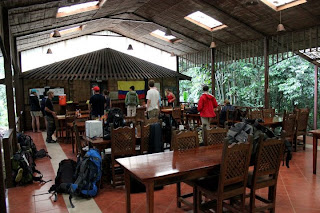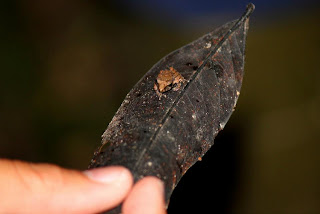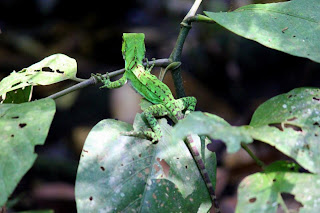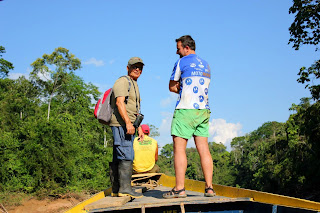Yesterday I accomplished something that I never imagined I would do.
The Volcán Cotopaxi is located on the western cordillera of the Andes mountains in Ecuador, and it is (with some contention due to qualifying adjectives) the third highest active volcano in the world. It erupts roughly once a century, and is due for the 21st century so far. When Cotopaxi erupts, it is explosive and affects the entire country of Ecuador. Cotopaxi greets many of my classmates when they wake up and look out of their windows in the morning, as it is clearly seen in the Quito/Cumbayá skyline with its distinctive white-topped cone. (My host house has a really high fence that blocks city views.) Ambrosia, the bakery at USFQ, also makes cute little Cotopaxi cakes that have the volcano crater shape at the top and is sprinkled with confectioner’s sugar to mimic the glacier cap. I will probably pose with one of these cakes in a picture sometime soon.
Cotopaxi is 5897 meters in height, which is 19,347 feet. This is 6 feet higher than Mount Kilimanjaro and a little under 5,000 feet higher than Mount Ranier. This is also higher than anywhere I have ever set foot.
So the field trip this week was to inspect volcano deposits in the western cordillera in comparison with the eastern cordillera (which is where Quilotoa, our destination last week, is located).
 |
| We made two geological stops to observe outcrops and landscape features. But really there was a tacit understanding that this trip was mostly about the Cotopaxi summit. |
 |
| Us at our first geological stop. Juan, who is an important character in this entry, is the stranger on the right listening to Ben's lecturing. (Photo from Ashley) |
So I put my name on the list two weeks before the trip, paid the guides and supplies fee, and started “training.” This training consisted of talking extensively about running trails in Cumbaya with classmates, not actually going on any of these trails and instead running around my very small host neighborhood for an hour twice in the two weeks of preparation, doing intense power yoga a few times, and nearly summitting Rucu Pichincha with two classmates and a guest this Monday.
A short aside, our Rucu Pichincha story is a little fun, too. We wanted to help a friend from USFQ with hosting her visiting friend from Switzerland while she was away at Tiputini with a class, and so we decided to invite him to join us on a hiking day. It was a marvelous hike - we’d tried to hike Rucu Pichincha, which is the mountain accessible on the Teleférico I’d visited my first week here, the weekend before Quilotoa and found it an extreme challenge. It had taken us two hours to hike half of the trail. This time around, we were at a point ALMOST at the summit in 2 hours. We credit Quilotoa two-fold summitting for our great improvement in performance. The fog cover at the top of Pichincha was really thick and we were starting to feel some raindrops on our heads, so we decided it’d be best to turn back around and call it a day. Except it started to hail really hard. So what took us 2 hours to climb up took us 20 minutes to sprint down because the hail was pretty painful, and the winds were very cold. And then it took us 20 minutes to secure a cab to get back to the Rio Coca bus station in Quito so we could make it back to Cumbaya and get some warm, dry clothes. On the bus I chatted with the lady next to me, and she wants to be a host mom for GAIAS students! The day after, I woke up with a cold. Great.
But back to the topic at hand. I “trained” for Cotopaxi and was happy with my pleasantly short summit time at Pichincha. It was like my heart muscles decide, “I heard you’re trying to climb a super high volcano this week? Okay, I guess we can up production for a little bit.” (But note: the Pichincha summit was actually a little lower than the place we’d sleep for the night at Cotopaxi. Heh.)
Wednesday, we went as a class with our professor and with Jennifer, the USFQ international programs assistant person who was going to hike with us, to rent supplies from a tiny understaffed shop in Quito. I came back with 12-pound glacier boots, a thermal fleece, waterproof outer pants (XXL men’s! Woohoo....?), protection 4 sunglasses for the glacial ice brightness, and giant goofy-looking multicolored mittens to wear outside of my biking gloves for added warmth.
We left for Cotopaxi at 8 am on Thursday and went through some small towns nearby Quito to pick up 4 of our 5 mountaineering guides who would lead us up. The five guides are Christian (who seems to be in charge of the mountaineering group and had the best English and is misleading small and slight), Julio, Juan, Segundo, and Pato.
 |
| Can you see the ridiculous road? Our bus driver was a star. |
The first thing that happened to us when we arrived at the Cotopaxi park after riding through some bumpy and steep dirt roads: we are kicked off of the bus at the parking lot and told to take a 45-minute hike up because no vehicles can reach the Refugio, the hostel-type place where Cotopaxi visitors are housed.
 |
| The only time a 1-kilometer hike takes 45 minutes is when it is up a really steep hill of loose volcanic rocks while carrying heavy bags. |
 |
| But it cleared up closer to the Refugio. You can see me towards the front - look for the pink raincoat. (Photo by Ashley) |
 |
| View of the Refugio and the slope we climbed up, taken from the ridge. (Photo by Samantha on my camera) |
So we relax there for a bit, drink lots and lots of tea, aren’t given our gear training session because the weather was not good enough to do the demonstration, get super excited to see Esteban join us for the hike, eat dinner (veggie pasta and soup), get a short introduction and orientation from the guides, and go to “sleep” from 7 pm to 11 pm.
 |
| Sunset on the western cordillera, Thursday the 27th. (Photo by Samantha) |
 |
| More sunset. (Photo still by Samantha. I was too cold to stand outside to take pictures at sunset.) |
Our hike was to begin at 12 am and continue only until 7:30 am, at which point everyone had to head down from the glacier and back to the Refuge because of risk of avalanches and other things that happen when glaciers melt, since sunrise is at 6 am at the Equator. The goal was to summit before 7:30 am, which is reasonable because it should take 2 hours to get from the Refuge to the lower edge of the glacier, 2 hours to get past the glacier crevasses and the main ridge, and around 2 hours to get from there to the top. Juan was the main one giving orientation advice on what to expect and what to pack, and he told us that the last third of the summit attempt is all about using your mind to overcome your body.
With lots of nerves and very little oxygen, our group tucks in to sleeping bags and try to rest for four hours. I couldn’t really breathe and was feeling strangely from the altitude, so I didn’t get much sleep at all. Luckily, I felt fine when we were woken at 11 pm to eat “breakfast” and gear up for leaving at midnight. With warm sugar water and snacks packed, helmets, headlamps, harnesses, and 3 or 4 layers of coats on, we were ready to go.
The first sight that really struck me as we started our hike was the glimmering of Quito and its suburbs in the far distance behind us. This blog has some good pictures to help augment my illustration. We also used it as reference and inspiration in the two weeks before going.
We were 12 people - myself and 8 classmates, Ben, Esteban, and Jennifer. Originally, we’d picked out hiking partners and were assigned a particular guide. I was with Laleña as hiking partners with Julio as our guide, but unfortunately as we made our way up the volcanic debris paths, Laleña felt sick and had to turn around with Julio sometime around half an hour into our hike. We ended up with quite a bit of reshuffling of hiking groups. So then I joined the conglomerate of guides and classmates that had formed on the trail. I was then adopted by Segundo to hike with Erika and Lorraine, and subsequently plucked out by Juan when Louise turned back and left Mary alone with him. A little later on, we lost Anna to stomach problems. When we made it to the short rest stop at the edge of the glacier, Ben announced that he had a terrible headache and would be turning around, too. We were dropping like flies!
Since I was then officially walking with Juan for the hike, he helped me check that my crampons were on properly (what an ugly word, right? They are spiky boot attachments that allow for safe treading through snow and ice.) and roped Mary and I in a line to him. This set-up had myself with about 5 feet of rope behind Juan and Mary with about 10 feet of rope behind me. As we hiked through the lower edge of the glacier in these ropes, I was easily able to keep pace with Juan but we quickly realized that Mary’s pace was not as compatible and he was reluctant to slow down very much. It became an uncomfortable period of us walking, Mary’s rope going very taut, and us pausing for her to catch up. After crossing most of the crevasses in the glacier edge, we came across Jennifer struggling with altitude sickness with her guide, and figured out it would be better to have Mary join her group, which would travel slower than Juan and I.
So I had my own guide for the hike. Good deal!
I kept pace really well with him through the insides of the glacier (which are incredible and eery, but it was dark and cold, so my camera would not have done well with it - I brought an actual camera on the hike this time.) and could do just fine on the extreme slopes if I didn’t look up and asked for him to slow down a little bit. My cold wasn't bothering me, my lungs and heart felt normal. I was very lucky!
We stopped for a short break in an ice cave at one point and when I asked him how far we were from the summit. Juan said, “That is not a good question. Just keep walking.”
This song played in my head quite a bit as we hiked, one step at a time...
As we got further up it became much more challenging because the steep slopes are steeper, the air gets progressively thinner and colder, and the glacial coverage has a higher concentration of snow versus slush. I tackled and achieved the slopes mostly through yogic breathing, not looking up to see how much more I had to go, following step by step how Juan was moving, and employing my self-assuring breaths that I’d figured out in Quilotoa.
After we got around the main ridge, the slopes became positively ridiculous. It was a little ironic that the point of the night when my body was most exhausted was the point most crucial to deciding whether I’d make the summit by sunrise and the point where the slopes become really hard to manage. Cotopaxi is not an overly technical mountain to climb, meaning it’s not required to have special gear (besides crampons and ice axes, which we used as walking sticks and stability tools) or technical training to try to climb it. However, some of the snow slopes were so steep I was reduced to hands and knees trying to overcome them.
 |
| This is the ridge we were crossing during sunrise, which happens to be somewhere near the first third of the extreme slopes. |
 |
| Couldn't really grasp how much further we had to go. |
The portion of the hike directly before the summit was when I had my most challenging moments. There are five or six steep snow slopes that require really strong leg work, careful balancing, and well-managed breathing, but at this part of the night my body was reaching its breaking point. I was exhausted from a shortage of sleep and oxygen and an excess of boot weight on my legs, I’d been climbing steeply inclined trail for the past six hours, and I really had no experience attempting a hike longer than 5 hours at once before.
At these slopes, I would take a few steps, try to call on all of my positive thinking, careful breathing, and special envisioning to keep on moving as steadily and quickly as I had been for the first two thirds of the hike or at least in a steady manner at all, but I was invariably reduced to a desperately panting and really upset pile of Jackclyn and gear in the snow at each slope.
Juan was incredibly patient with my whining. I think I whined more on this summit than I have to anybody in a single day, including my mom. He coached my breathing, assured me I was doing well on the climb, and reminded me to take it slowly and just keep breathing and stepping steadily. I would whimper that I was trying to do exactly that, attempt to continue with a war grunt to stand up, take a few good steps, and end up collapsed and upset again. I felt like I was losing control of my body, and as much as I mentally wanted to reach the summit it seemed like my depleted muscles were disagreeing.
At the last four slopes before the summit, I started making a really bizarre noise when I tried to keep moving. It was extremely guttural in nature and was the saddest sound I think I’ve ever heard myself making; a strong mix of frustration that I couldn’t really control my body, couldn’t feel a full lung of air, the pain in my body that I felt with every move, and the tiredness of such an extremely long hike especially after I looked up to see how much further the slope extended. At the last slope, Juan was feeling really worried that I’d made it so far but was so obviously struggling to even stand up. Two thirds of the way in, he had assured me that since I made it that far already I would definitely make it to the top. I wanted so much for him to be correct.
I started the night with one breath’s pause between steps on challenging slopes, and by the end of the hike up could hardly bring myself to shift a foot with six or more deep breaths between.
At the last slope after I’d collapsed and retried ascending for about 10 minutes and didn’t make any progress, Juan offered to help me to the summit by being a moving walking stick for me, where I grasped onto his backpack and follow his steps. It actually worked to help keep me moving. As a very frustrated and exhausted me trudged up the slopes on Juan’s back, we crossed paths with Ashley, Samantha, and Esteban on their way down, who all congratulated me for being about 5 minutes from achieving the summit and was as happy to see me as I was to see them.
 |
| Ashley and Esteban's picture at the summit. I was struggling up the slopes at this moment. (Photo taken from Ashley) |
Upon reaching the summit, I wasn’t ready for my reaction. I was overwhelmed with wonder at what I had just done and was completely stunned by the view. All of Ecuador was visible from where we stood. My whole body was worn out, but I had reached my goal. I had made it.
The journey to the summit seemed like a bit of a metaphor for me: I don’t necessarily have all of the resources to do everything on my own, but with the physical and emotional help of others and the right pacing for milestones, there is no goal too hard to achieve. I’m sure I can compose a poem that compiles my feelings about this much better once I get a chance to just sit and feel.
So I took some pictures, admired the incredible view with Juan, and had to head back down around 7:40 or so because the sun was coming up.
 |
| The crater of Cotopaxi and the south of Ecuador in the distance. |
 |
| The edge of the last slop on the bottom right, the southwest of Ecuador in the distance. |
 |
| I basically fell into a sitting position trying to pose for this picture. |
 |
| Antisana volcano in the north |
 |
| More of the crater. |
 |
| Juan (with some dried guayaba in his mouth) and me. |
 |
| I insisted on posing with a random Irish couple, not sure why. I'd chatted with them at the Refugio where we tried to sleep the night before. |
 |
| The west of Ecuador and Juan. |
I thought the hike back would be easier than it was. At first it was fine since I was still really pumped up from the summit, and the insane slopes down from the top weren’t as bad as on the way up. I chatted with Juan and found out he’s 31, has a degree from some university in Quito in Industrial Engineering, but he doesn’t do any engineering and instead is a hired climbing guide, owns an outdoor supply shop and a bouldering wall, and also runs an outdoor boot repair shop on the side. His older sister lives in Germany with her husband. He wants to improve his English (I think most of our conversation was in Spanish) and admires the beauty in mountains all over the world.
But when the slopes didn’t get any easier on the way down and I started becoming aware of the exhaustion in my muscles again, I couldn’t converse amicably anymore.
 |
| Ashley snapped a picture of me right about where my conversation with Juan stopped. |
Some things I either thought or said aloud to Juan:
“There is no way I climbed up this slope. I don’t remember doing this.” (Probably because you were so tired you didn’t notice.)
“I need a break.”
“Can I just sit and slide down this snow? It’d be a lot easier and faster than climbing.” (No, you'll ruin your pants and harness.)
“How much does the helicopter cost to ride back on?” ($9000. I whimpered and kept trudging.)
“I need to rest.”
“There’s not another way around that up-slope? Can I cut a new path in the glacier around it?”
“I just fell. I need to take a break.”
“I need to breathe here.”
“I need to sit and drink water.”
“I’m really sorry that I’m so slow now.” (“You’re destroyed.” he remarked. "Don't be sorry, you made it to the summit. You're a fighter. You're just worn out now.")
“When does the ice stop?”
“I am covered with slush from falling.”
Once we were out of the glacier we were able to shuffle-slide down the volcanic debris along the side of the mountain, but I was so tired that it was hard to control my legs and I fell every few hundred meters - maybe about 15 times or so. Each fall counted as a break time for me, and then Juan would help me up again and lead me shuffling down by the hand. He kept assuring me I could push or pull him to stay upright, but I was reluctant to do so and didn’t really have reflexes to recover my balance before falling, so I have lots of bruises now.
But I made it back to the Refugio around 11:30. And Juan made me a cup of hot chocolate, Christian carried most of my heavy things back to the bus where everyone else was waiting, and Ben and Esteban came and met me at the edge of the parking lot to congratulate me and give me hugs.
Beautiful day.
 |
| The three of us who made it to the summit, taken after lunch at a nice restaurant. |
Sunday at 5:30 am, I leave Cumbaya for the Galápagos. One week in Isabela for final Geology class happenings, and then to San Cristobal for the rest of the semester!












































































































